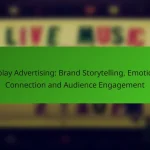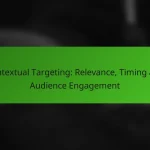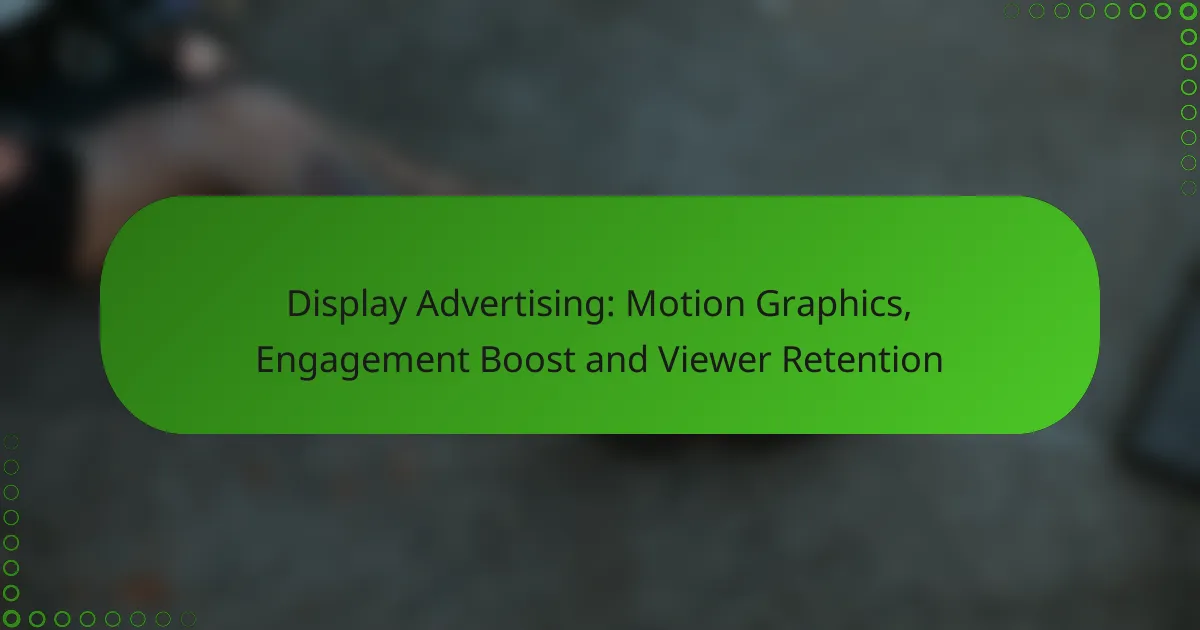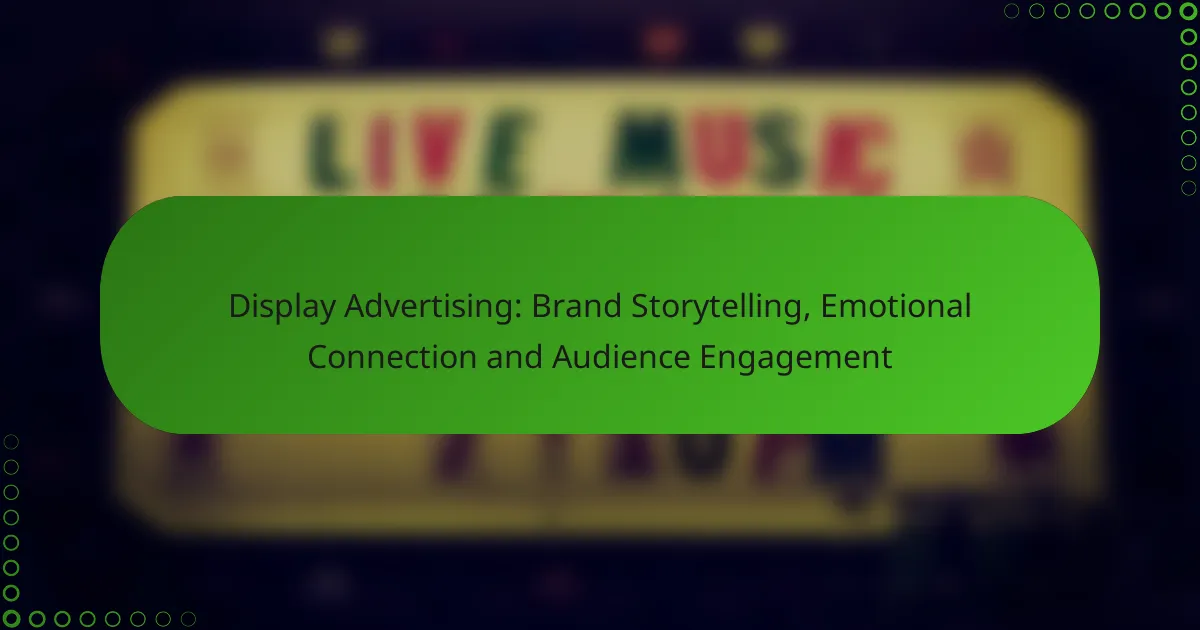Motion graphics play a crucial role in enhancing display advertising by capturing attention and effectively conveying messages. Their dynamic nature not only boosts viewer engagement but also improves retention, making advertisements more memorable. By employing best practices such as concise animations and clear branding, advertisers can create impactful experiences that resonate with audiences.

How do motion graphics enhance display advertising in major cities?
Motion graphics significantly enhance display advertising in major cities by capturing attention and conveying messages more effectively. Their dynamic nature engages viewers, making advertisements more memorable and impactful.
Increased viewer engagement
Motion graphics boost viewer engagement by adding visual interest that static ads lack. The movement draws the eye, encouraging viewers to stop scrolling and pay attention. This is particularly effective in bustling urban environments where competition for attention is fierce.
To maximize engagement, consider using animations that highlight key messages or features of your product. Short, looping animations can be particularly effective, as they can be viewed multiple times without losing impact.
Improved brand recall
Brands that utilize motion graphics often see improved recall among their target audience. The combination of moving visuals and sound can create a stronger association with the brand, making it easier for consumers to remember. This is crucial in cities where consumers are bombarded with numerous advertisements daily.
To enhance brand recall, ensure that your motion graphics are consistent with your brand identity, including colors, logos, and messaging. Using a memorable tagline or jingle alongside the graphics can further reinforce brand recognition.
Higher click-through rates
Incorporating motion graphics into display ads can lead to higher click-through rates compared to static ads. The engaging nature of motion captures interest and encourages users to interact with the ad. Studies suggest that ads with motion can see click-through rates that are significantly higher, often in the double digits.
To achieve this, focus on creating compelling calls to action within your motion graphics. Clear, concise messaging combined with eye-catching visuals can drive users to click through to your website or landing page, increasing the likelihood of conversions.

What are the best practices for using motion graphics in display ads?
Effective use of motion graphics in display ads can significantly enhance viewer engagement and retention. Best practices include keeping animations concise, ensuring clear branding, and optimizing for mobile platforms.
Keep animations short and focused
Animations in display ads should be brief, ideally lasting no longer than a few seconds. This helps maintain viewer attention and prevents distractions. Focus on a single message or action to avoid overwhelming the audience.
Consider using animations that loop seamlessly or transition smoothly to keep the viewer engaged without losing the core message. A good rule of thumb is to limit animations to 5-10 seconds to maximize impact.
Use clear branding elements
Incorporating recognizable branding elements is crucial for building brand identity through motion graphics. Use your logo, brand colors, and consistent fonts to create a cohesive look that reinforces brand recognition.
Ensure that these elements are prominent but not intrusive. A well-placed logo or tagline can enhance recall without detracting from the animation’s primary message.
Optimize for mobile devices
With a significant portion of display ads viewed on mobile devices, optimizing animations for smaller screens is essential. Ensure that graphics are legible and that animations load quickly to prevent user frustration.
Test your ads across various mobile platforms to ensure compatibility and responsiveness. Aim for a resolution that maintains quality on smaller screens while keeping file sizes manageable to enhance loading times.

How can display advertising boost viewer retention?
Display advertising can significantly enhance viewer retention by engaging audiences through dynamic and interactive content. By utilizing various techniques such as interactivity, storytelling, and personalization, advertisers can create memorable experiences that keep viewers coming back.
Utilize interactive elements
Incorporating interactive elements into display ads can greatly increase viewer retention. Features like clickable buttons, quizzes, or polls encourage users to engage actively rather than passively consuming content. This interaction not only captures attention but also fosters a sense of involvement, making the ad experience more memorable.
For instance, a fashion retailer might use an interactive lookbook where users can click on items to see more details or make purchases. This type of engagement can lead to longer viewing times and higher conversion rates.
Incorporate storytelling techniques
Storytelling in display advertising helps create an emotional connection with the audience, which can enhance retention. By crafting a narrative that resonates with viewers, brands can make their messages more relatable and impactful. A compelling story can keep viewers engaged and encourage them to share the content with others.
For example, a travel company could showcase a short video that tells the story of a family’s vacation experience, highlighting the joy and adventure of their journey. This narrative approach can evoke emotions and encourage viewers to remember the brand when planning their own trips.
Leverage personalized content
Personalization in display advertising tailors content to individual preferences, which can significantly boost viewer retention. By analyzing user data, advertisers can create ads that reflect the interests and behaviors of their target audience. This relevance makes the ads more appealing and increases the likelihood of viewer engagement.
For instance, an online bookstore might display personalized recommendations based on a user’s previous purchases or browsing history. This targeted approach not only captures attention but also encourages repeat visits as users feel understood and valued by the brand.

What metrics should be tracked for motion graphics performance?
To evaluate motion graphics performance, focus on key metrics such as engagement rates, conversion rates, and view duration. These metrics provide insights into how well your graphics capture attention and drive desired actions from viewers.
Engagement rates
Engagement rates measure how actively viewers interact with your motion graphics. This can include likes, shares, comments, and click-throughs. A higher engagement rate indicates that your content resonates well with the audience.
To calculate engagement rates, divide the total interactions by the total views, then multiply by 100 to get a percentage. Aim for engagement rates above 5% for effective campaigns, but this can vary by industry.
Conversion rates
Conversion rates reflect the percentage of viewers who take a desired action after viewing your motion graphics, such as making a purchase or signing up for a newsletter. Tracking this metric helps determine the effectiveness of your call-to-action.
To calculate conversion rates, divide the number of conversions by the total number of viewers, then multiply by 100. A good conversion rate typically falls between 2% and 5%, depending on the sector and campaign goals.
View duration
View duration indicates how long viewers watch your motion graphics before dropping off. Longer view durations suggest that your content is engaging and holds attention. Aim for a view duration that matches or exceeds the average for your platform.
To improve view duration, consider the pacing and storytelling of your graphics. Shorter, impactful clips often perform better, with ideal lengths ranging from 15 to 60 seconds for most advertising formats.

What tools are available for creating motion graphics?
Several tools are available for creating motion graphics, each offering unique features and capabilities. Popular options include Adobe After Effects, Animaker, and Vyond, which cater to different skill levels and project requirements.
Adobe After Effects
Adobe After Effects is a professional-grade software widely used for creating intricate motion graphics and visual effects. It offers a comprehensive suite of tools for animation, compositing, and video editing, making it suitable for advanced users and those looking to produce high-quality content.
When using After Effects, consider its steep learning curve, especially if you’re new to motion graphics. However, the extensive online resources and community support can help you overcome initial challenges. The software is subscription-based, typically costing around $20 to $50 per month, depending on the plan.
Animaker
Animaker is a user-friendly platform designed for creating animated videos and motion graphics without requiring extensive technical skills. It features a drag-and-drop interface, making it accessible for beginners and small businesses looking to produce engaging content quickly.
Animaker offers various templates and character animations, allowing users to create videos in just a few hours. Pricing starts at around $10 per month for basic features, with higher tiers available for more advanced functionalities.
Vyond
Vyond is another intuitive tool that focuses on creating animated videos for business purposes, such as marketing and training. It provides a library of customizable templates and characters, enabling users to produce professional-looking motion graphics efficiently.
Vyond’s subscription model typically ranges from $49 to $89 per month, depending on the features you need. It is particularly beneficial for teams looking to collaborate on projects, as it offers cloud-based storage and sharing options.








